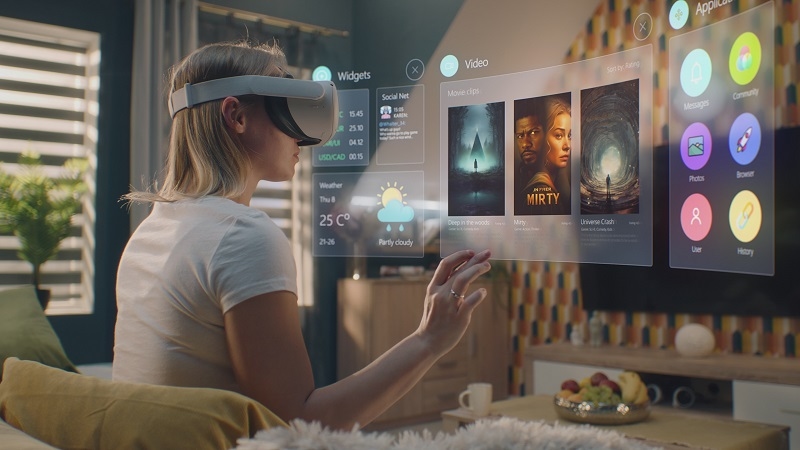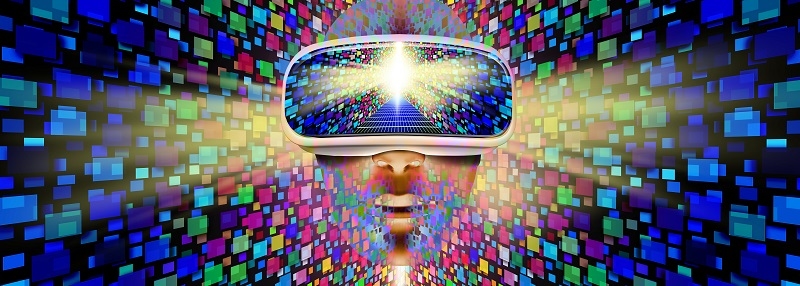
What digital art used to be once is no longer the case; it has progressed much further than computer-drawn illustrations and graphics. It has even reached a new stage in 2025, powered by such strong technologies as NFTs (Non-Fungible Tokens), AR (Augmented Reality), and immersive tools. Such innovations are redefining the process of creation, watching, purchasing, and communicating with the art. Just have a look at what is happening to the world of creators as digital art technology 2025 is revolutionizing it.
NFTs have transformed the game totally in favor of digital artists. These special online tokens are changing what it means to own property, what a thing of value is, and the sale of art online.
NFT art is digital art, which is locked in the chain of blocks, and is unique. Once an individual purchases an NFT, they possess the original copy of that digital artwork, as would be the case with a real painting, with the owner. Such digital files may be anything: paintings, animations, music, or videos.
NFTs were treated by many as a fad, and they are still here in the year 2025. The NFTs allow artists to demonstrate their creativity, and the collectors receive the pleasure of possessing a digital original that is checked. Through NFTs, artists will no longer have to face the problem of copying their art, and through the smart contracts, the artist will for sure be able to get royalties whenever the art is sold.
NFTs revolutionized the situation in which digital artists could not earn money from their creations easily. Today, however, they may offer their merchandise directly to fans via services such as OpenSea or Foundation. More to the point, once the NFT is, in turn, resold, the original artist retains a share of the revenues- this would have never been attained when selling traditional art.
AR is turning digital art into something we can experience with our eyes and body in the real world. This interactive form of art makes digital work come alive in new and exciting ways.
Augmented Reality (AR) art uses your phone or AR glasses to place digital visuals into the real world. Imagine pointing your phone at a wall and seeing a 3D sculpture or animation pop up—this is augmented reality art.
In 2025, more galleries will be using AR to enhance exhibitions. For example, a flat painting on a wall can expand into a moving story when viewed through an AR device. Even outdoor spaces are turning into open-air AR exhibits, where people can enjoy art on city streets, parks, or buildings.
With AR-supported apps, anyone can explore art anywhere. You no longer need to visit a museum—just use your phone and experience 3D interactive works. Some apps let users create their own AR art and share it online with global audiences.
Today’s digital art doesn’t just sit on a screen—it surrounds you. Immersive art experiences are among the most exciting digital art technology 2025 trends.
Immersive art uses technology like virtual reality (VR), 3D sound, and motion tracking to create an experience that fully involves the viewer. It’s not just about watching or viewing art; it’s about stepping into it and feeling it.
From Van Gogh-themed VR rooms to entire museums built in the metaverse, immersive installations are growing rapidly. These experiences can mix sound, visuals, smell, and even touch to create powerful connections.
Digital artists now use tools like Unity or Unreal Engine to build complex 3D environments. They create full digital worlds that users can explore with VR headsets. These works are more than visual—they tell stories, respond to movement, and create shared social spaces.

The growth of digital art technology in 2025 has made it easier than ever for anyone to become a digital artist. Software tools, platforms, and online learning have opened doors to creators everywhere.
In the past, expensive software made digital art hard to access. But now, free and low-cost tools like Procreate, Blender, and Canva allow more people to start creating. There are also AI-based art generators helping beginners bring their vision to life.
Websites like Behance, Instagram, and even TikTok have become spaces for artists to showcase work, connect with others, and build a following. NFT marketplaces, meanwhile, allow artists to monetize their work directly.
More artists are learning online through YouTube tutorials, courses, and live workshops. In 2025, digital communities are more connected than ever. Artists collaborate from different countries on shared projects using cloud-based design tools.
Art collectors and enthusiasts now want more than just static images. In 2025, technology offers new and smarter ways to enjoy, collect, and display digital art.
Smart digital frames like Meural and Netgear’s Canvas let people display NFT art or motion pieces on their walls. These displays are connected to the internet and can be updated with new artwork.
With platforms like Decentraland and Spatial, people can walk through virtual art galleries from anywhere in the world. Artists can build their own digital spaces to showcase and sell work to a global audience.
Thanks to blockchain, art collectors have peace of mind. NFTs prove who owns what, and smart contracts prevent art theft and forgery. Even physical art is now being paired with NFT certificates for extra security.
One of the most exciting trends in digital art technology 2025 is the merging of NFT art and augmented reality art. This combo brings a whole new level of interaction and creativity.
Some artists are creating NFTs that unlock AR experiences. For example, a buyer might purchase an NFT image, but when viewed through AR, it turns into a 3D sculpture or animation. This fusion makes the art more engaging and valuable.
Major fashion brands, game creators, and digital designers are using AR NFTs in their products. Imagine buying a digital outfit for your avatar, which you can also project into your real-world space using AR—this is the future of art and design.
NFT art, as well as augmented reality art, basic work of art to a completely immersive digital experience; the future of art is digital, dynamic, and dazzling. As the digital art technology 2025 keeps on developing, both artists and viewers will get additional means of getting connected, getting inspired, and sharing. As a collector, creator, or occasional observer, none of you saw a better time to get acquainted with the world of digital art.
This content was created by AI